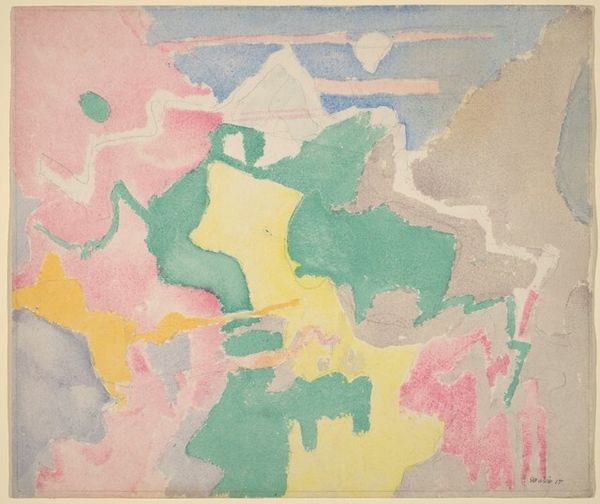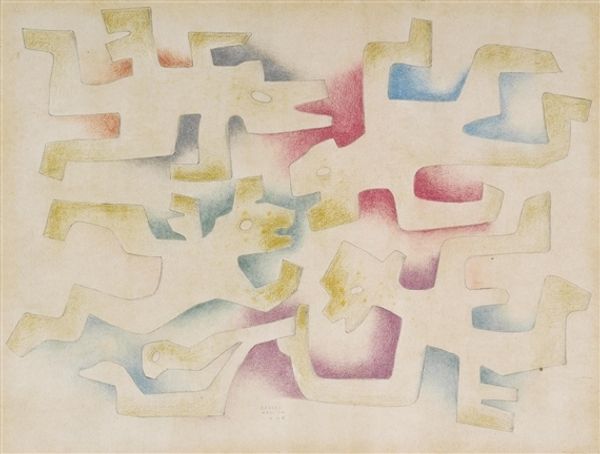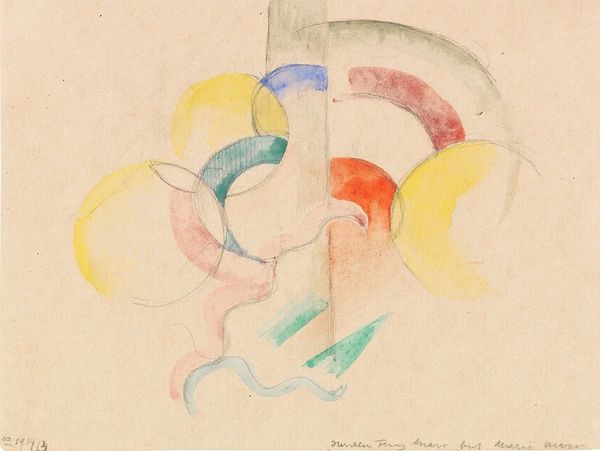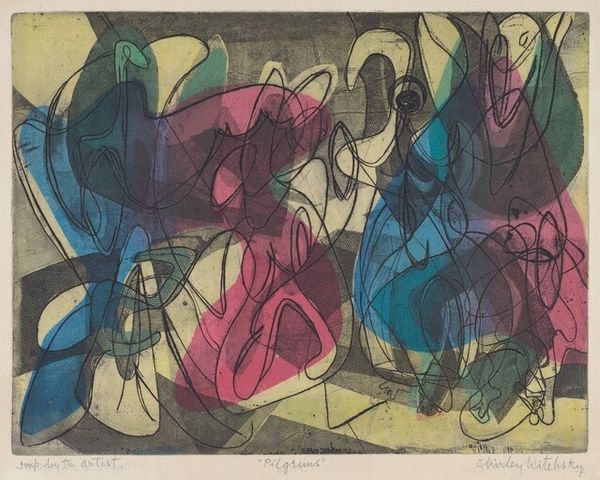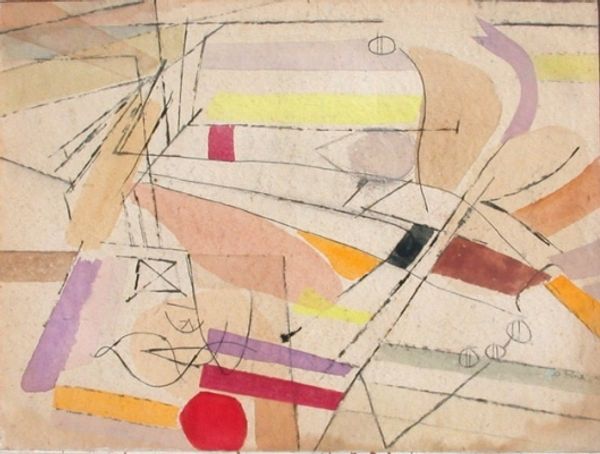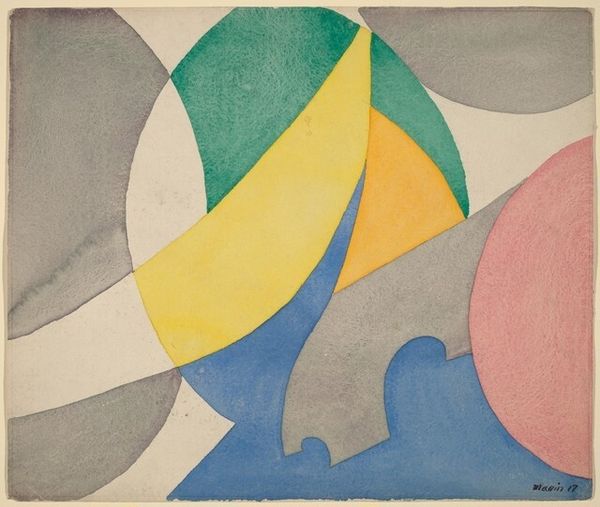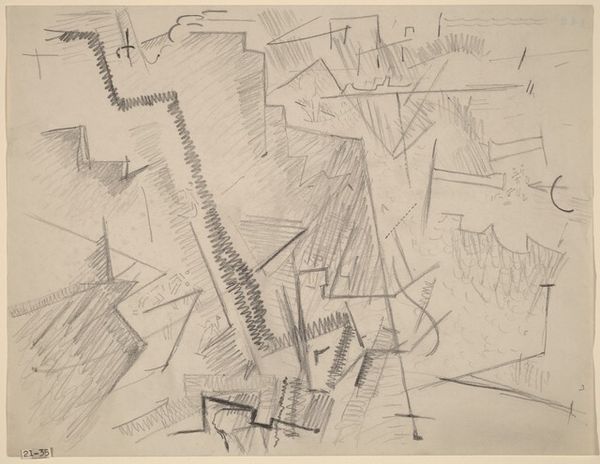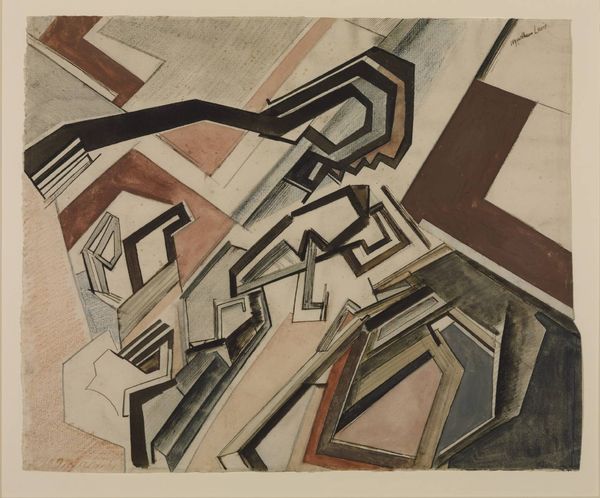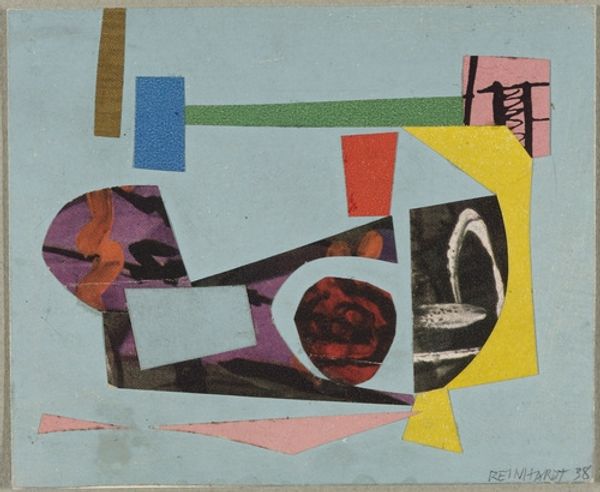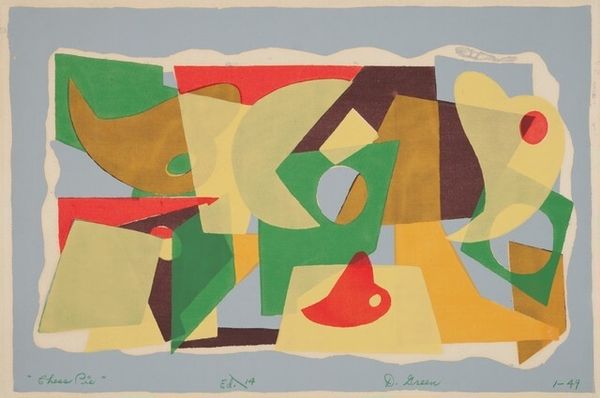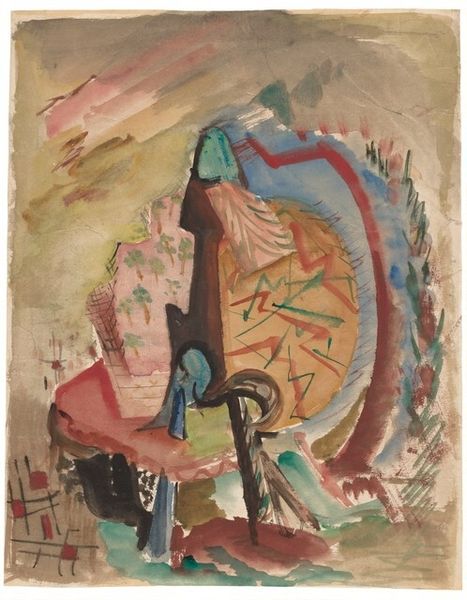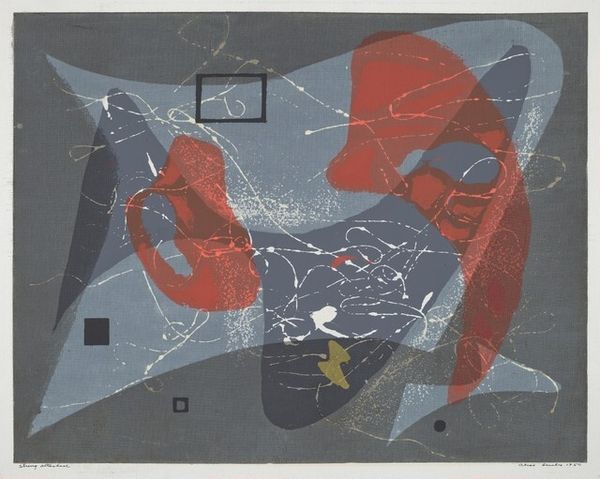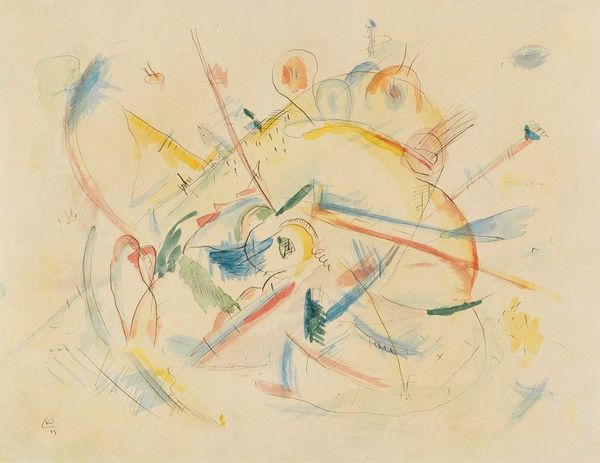
drawing, watercolor
#
drawing
#
water colours
#
form
#
watercolor
#
geometric-abstraction
#
abstraction
#
line
#
modernism
#
watercolor
Dimensions: overall: 41.4 x 49.1 cm (16 5/16 x 19 5/16 in.)
Copyright: National Gallery of Art: CC0 1.0
Curator: We're looking at "Abstraction," a watercolor and drawing created around 1917 by John Marin. Editor: It has an intriguing, almost unstable quality. The geometric forms seem to collide and fracture. The cool, translucent colors also contribute to this overall feeling of dynamic disarray. Curator: Marin's move towards abstraction can be viewed within the historical context of early 20th-century artistic experimentation. This period was defined by the dismantling of representational traditions as artists responded to profound socio-political shifts and emergent technologies. Abstraction, for many artists like Marin, became a way to visualize the experience of modernity itself – its speed, energy, and fragmentation. Editor: Yes, but I find the dynamism of this work emerges most clearly through its internal relationships. See how he contrasts areas of intense blue and pink against quieter passages of gray, while yellow slashes are activated, visually disrupting any potential stillness. Curator: I agree. Considering the impact of urbanization, industrialization, and the burgeoning political movements during Marin’s time, we can also understand this piece as a kind of commentary on societal structures. Perhaps the fracturing shapes symbolize a breaking down of established norms and hierarchies. The overall feeling of transience and tension seems representative of the instability felt across many sectors of society. Editor: Interesting, and yet there's also something joyous here. These colors—even applied in a somewhat chaotic manner—carry a visual intensity that really enlivens the whole picture plane. This inherent vibrancy, to me, speaks to something beyond pure chaos or disruption. Curator: Yes, looking closer at Marin's integration of color theory, and particularly its intersections with symbolism from a historicized perspective, brings to light the tensions within his era of radical societal transformations that either lead to creative opportunity or political crisis. It seems to signify more than mere disruption. Editor: So, beyond its socio-historical placement, perhaps the painting resides precisely in that formal tension; creating dynamism and hinting at stability while maintaining a captivating ambiguity. Curator: Ultimately, Marin gives us a snapshot into an era undergoing constant negotiation for social and aesthetic purpose, while opening up further explorations into those avenues and discussions within modern society as we still understand it today.
Comments
No comments
Be the first to comment and join the conversation on the ultimate creative platform.
